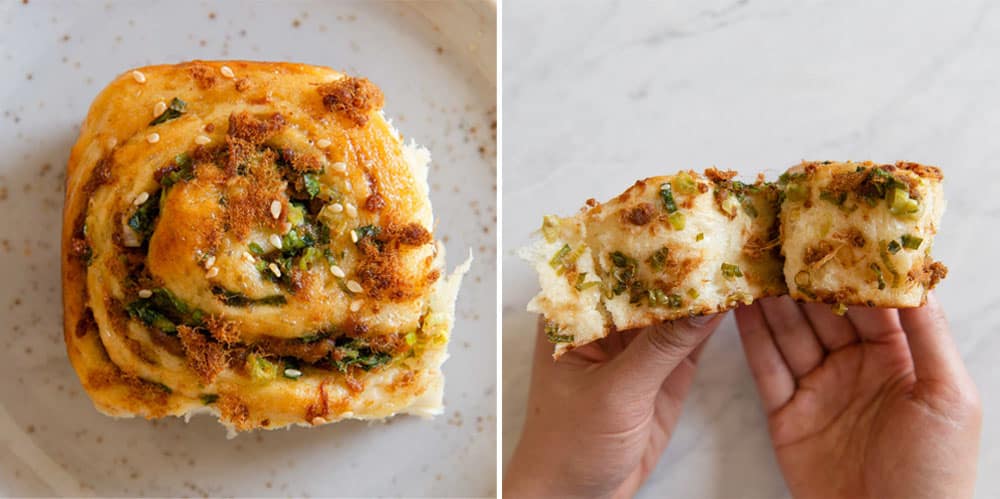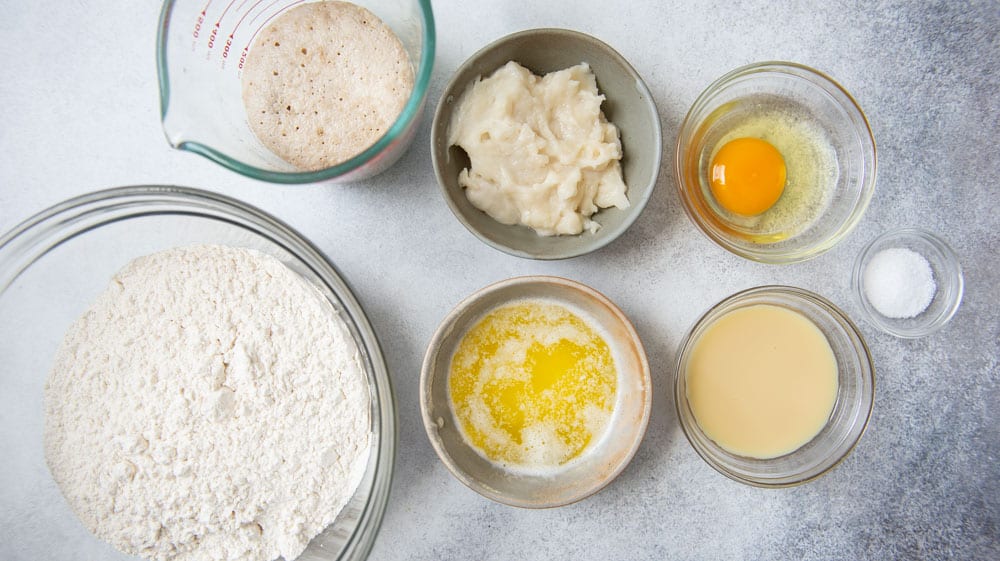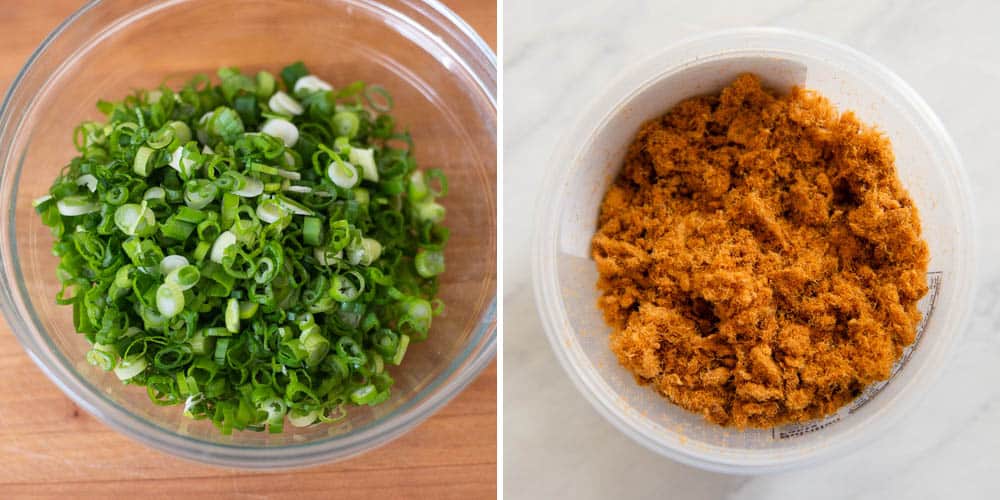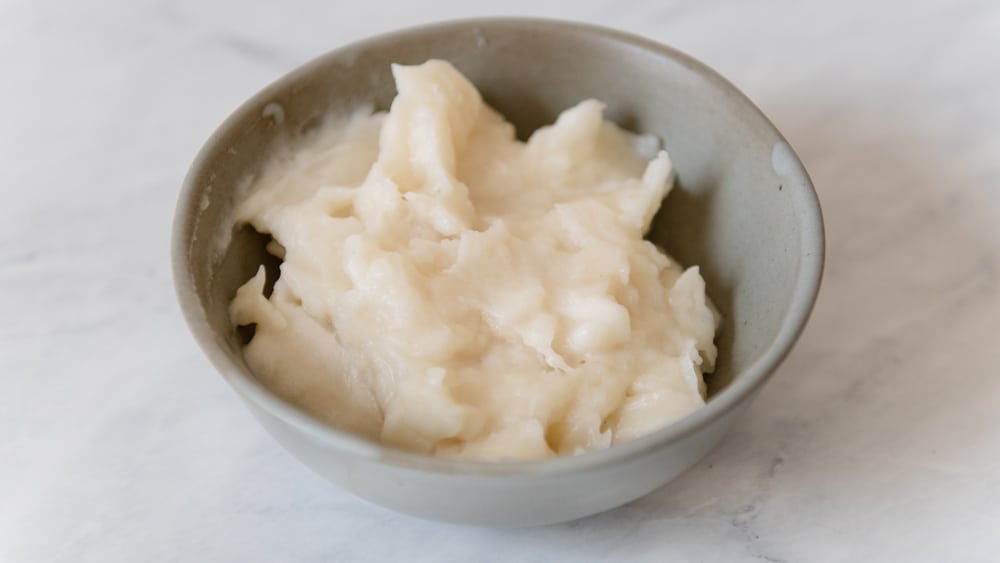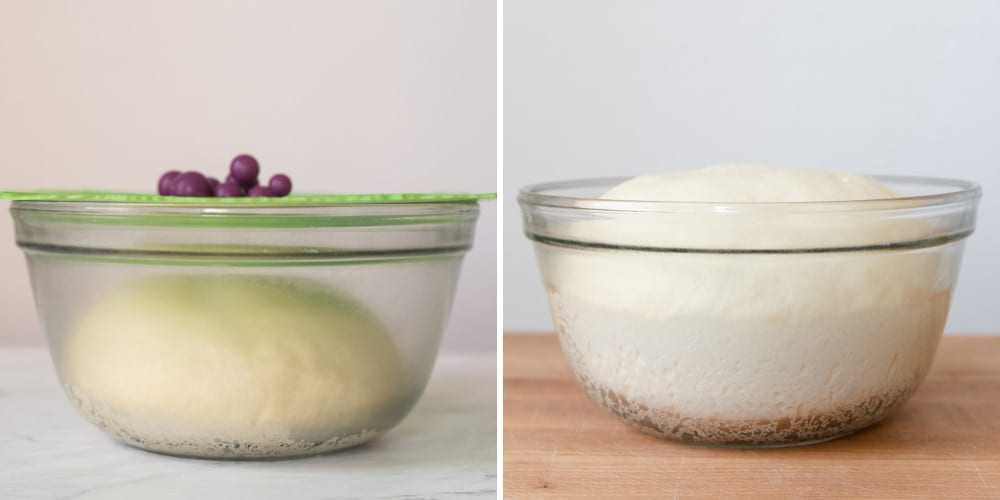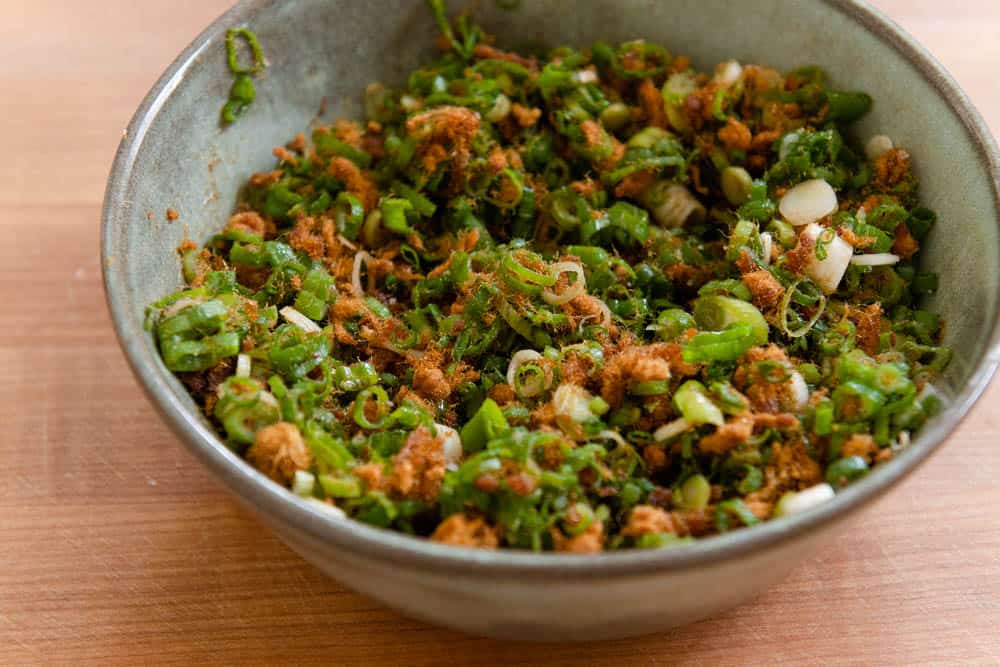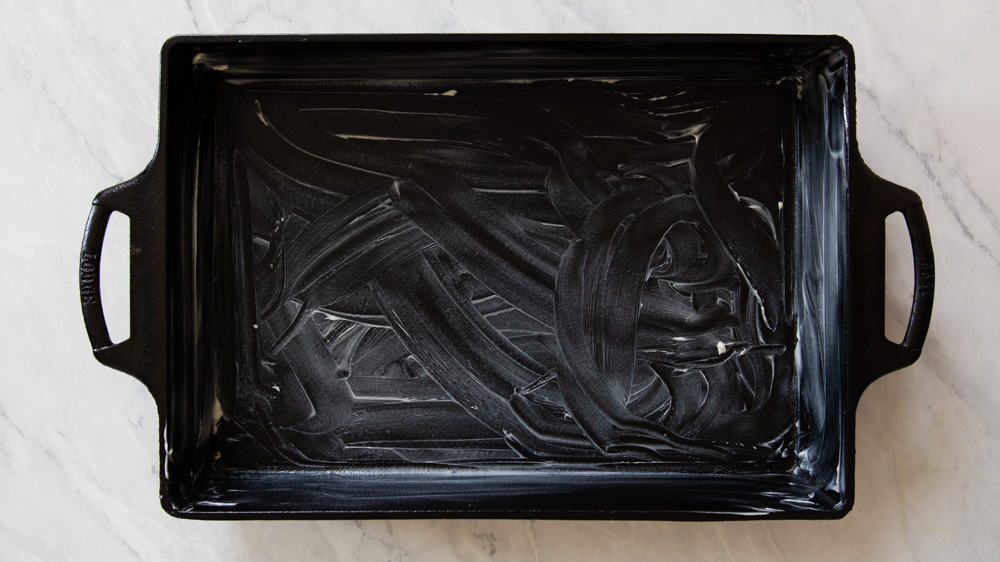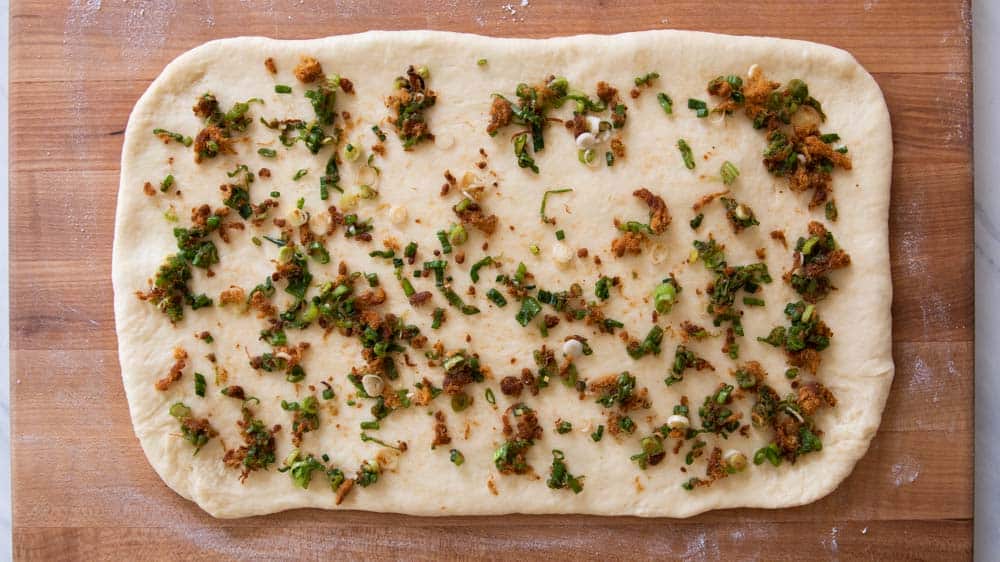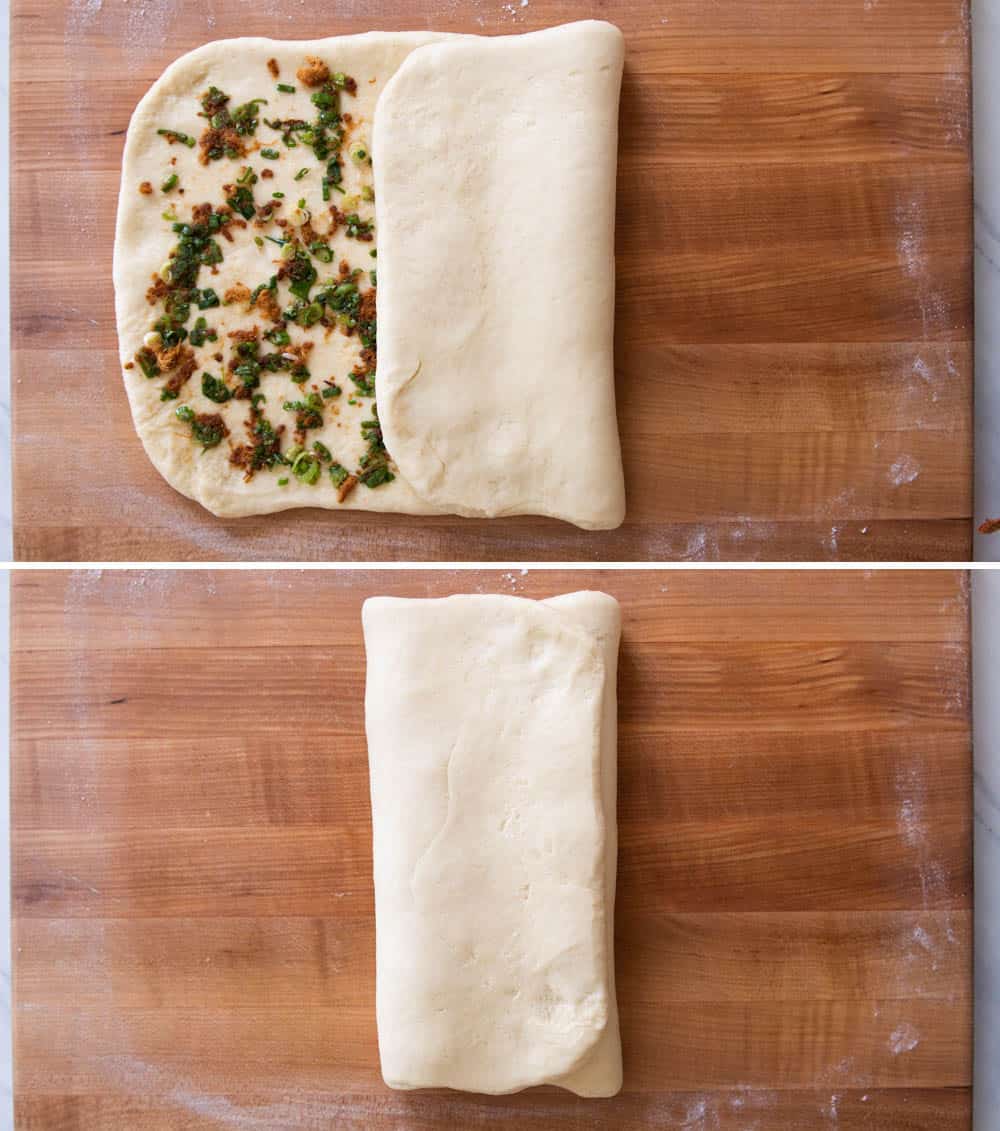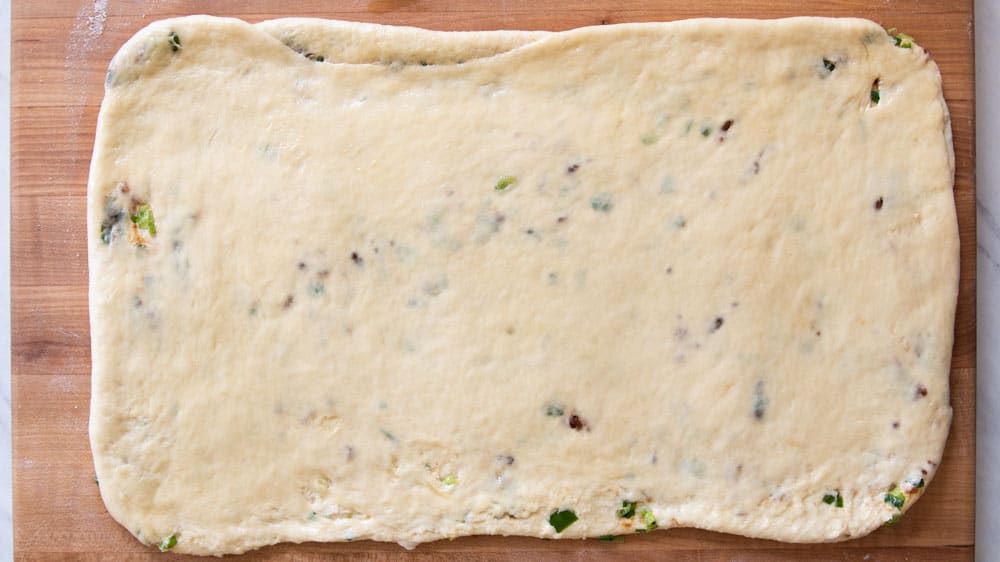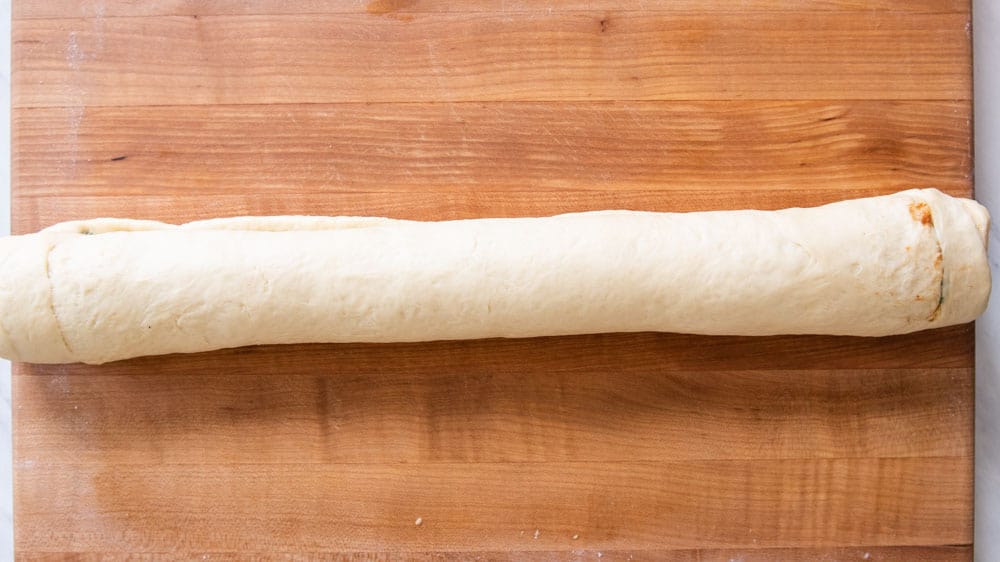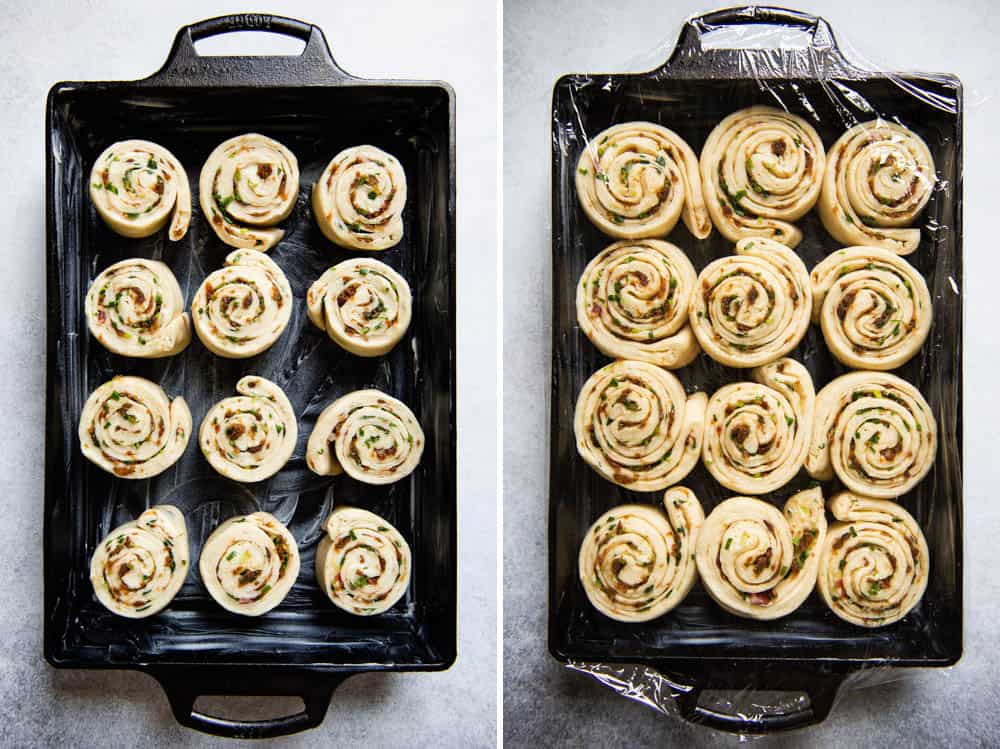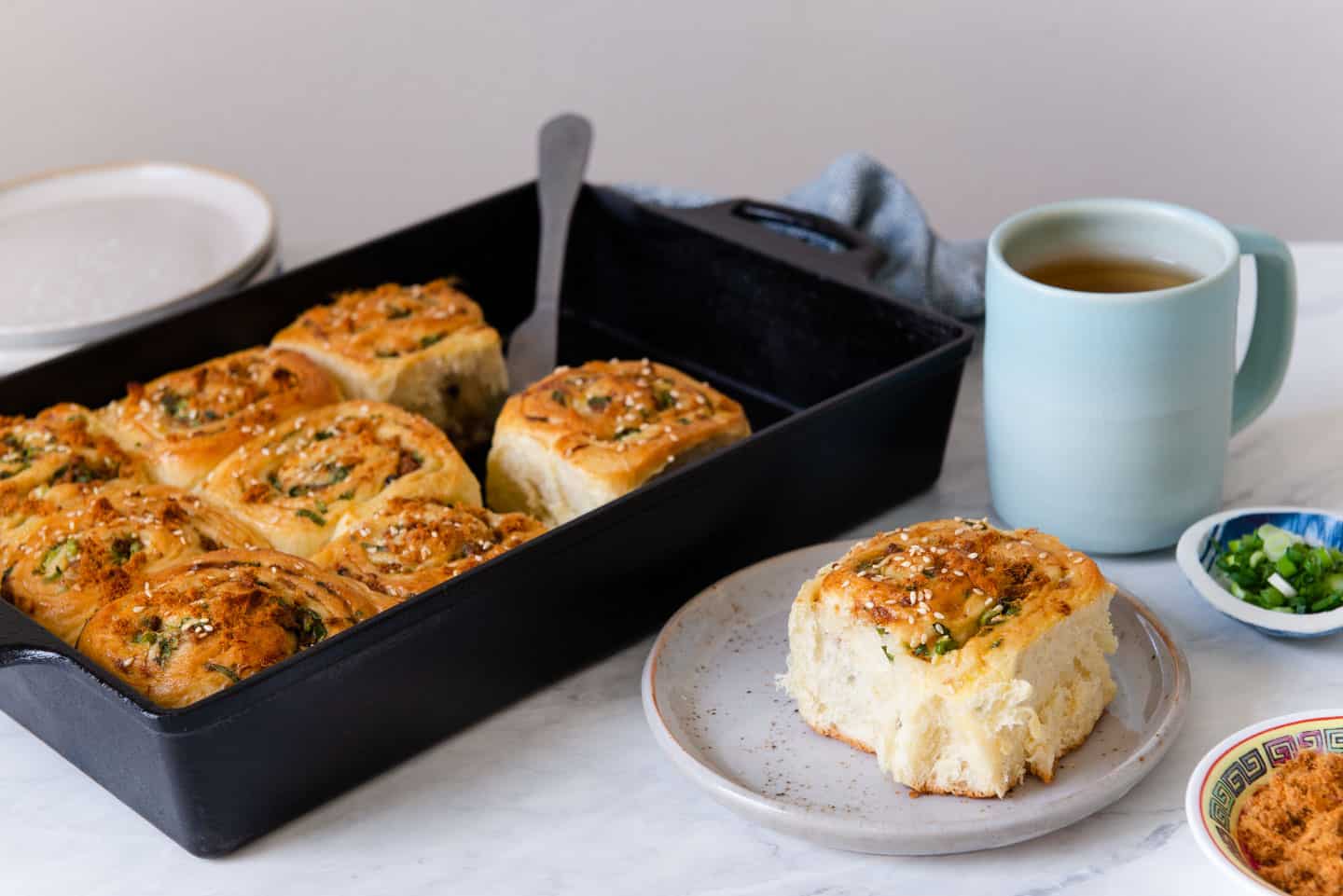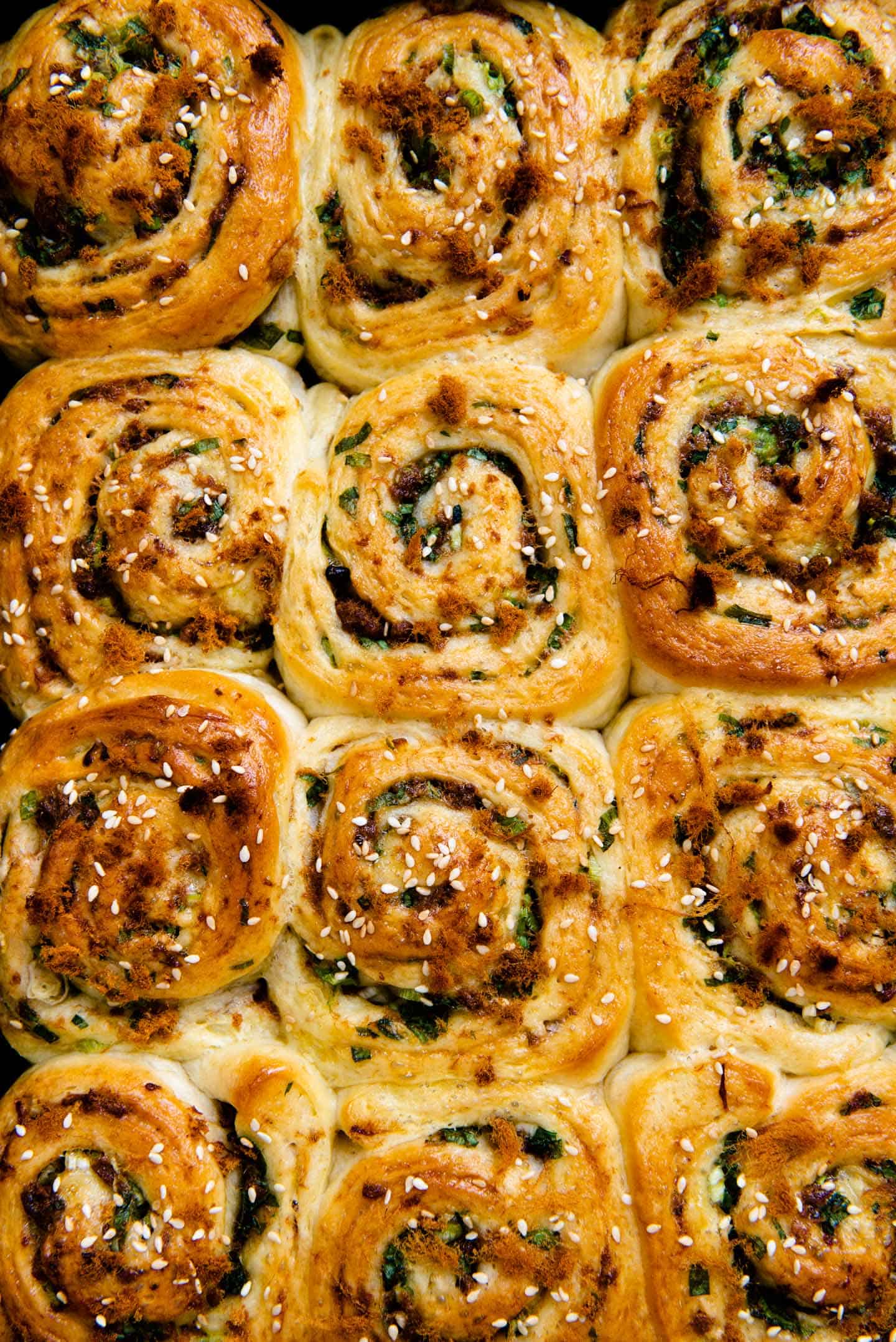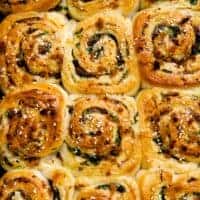Over the past year or so, I’ve been learning how to make my favorite breads from Chinese bakeries at home. These breads brought so much comfort to me during my childhood, and I always feel a sense of accomplishment when I’m able to recreate them. Plus, Mama Lin is usually impressed by the breads I bake, and you all know that impressing an Asian mother is no easy feat. When I first embarked on this baking journey, I didn’t know where to begin because there aren’t many cookbooks about Chinese baking. But through a lot of trial and error in my kitchen, I feel like I’m beginning to understand some of the basics of Asian-style baking (see my pineapple bun and baked cha siu bao recipes). I am excited to partner with Lodge Cast Iron to show you how to make these scallion and pork floss rolls as part of their #BakeItTilYouMakeIt campaign. The #BakeItTilYouMakeIt campaign celebrates the process of learning new baking skills at home, and I think it embodies the spirit of our baking journeys over the past year. As I learned how to bake Chinese breads, you were learning alongside me as well by trying out my recipes and sharing your photos with me. I genuinely enjoy seeing them! In this next baking venture, I drew inspiration from scallion buns (蔥油麵包) and pork floss buns (肉鬆包) from Chinese bakeries and reimagined them as tear-and-share rolls. For the recipe, I will be using the Lodge Cast Iron Casserole Pan, which is 9×13 inches. The Casserole Pan is durable and has great heat retention and heat distribution. All of Lodge’s cast iron bakeware is pre-seasoned. Before using it for the first time, rinse the pan quickly with water and wipe it down with a dry cloth. If you are planning to store the casserole pan for later use, rub the surface of the pan with a bit of oil.
HOW TO MAKE SCALLION AND PORK FLOSS ROLLS
INGREDIENTS
The ingredients in this recipe are quite straightforward. For the dough, you’ll need all-purpose flour, water, milk, yeast, sugar, butter, egg, sweetened condensed milk, and salt. The condensed milk gives the bread sweetness and milky flavor. If you don’t want to open a can of condensed milk, you can use 2 tablespoons of instant milk powder and 3 tablespoons of sugar instead. However, I prefer the flavor of the bread when it’s made with sweetened condensed milk. For the filling, you’ll need toasted sesame oil, scallions, pork floss, and salt. Pork floss is savory seasoned pork that is dehydrated and shredded (see above photo, right). The texture of pork floss is light and it melts in your mouth. Typically, pork floss is used as a topping for dishes, but it is hard not to snack on an entire tub in one sitting. You can usually find pork floss in an Asian supermarket near the sauce aisle. By the way, you’ll need a lot of scallions for this recipe. If you’re buying relatively small bunches of scallions from the store, make sure to grab 2 or 3 bunches for the recipe.
MAKE THE TANGZHONG
Those of you who are familiar with making my bread recipes know that I often use tangzhong (湯種), which is a paste made of flour and water heated together. When you incorporate tangzhong into the dough, it will give baked bread a light and airy texture. It sounds complicated, but all you’re doing is heating some flour and water in a saucepan for about 1 to 2 minutes. Stir the ingredients in the saucepan frequently because the liquid thickens very quickly. Once a runny paste starts to form, turn off the heat. Then, transfer the tangzhong to a bowl to cool as you prepare the remaining ingredients for the dough.
MAKE THE DOUGH
Right after making the tangzhong, I usually activate the yeast next as this process takes a few minutes. Mix warmed milk (anywhere between 105 to 120ºF is fine), sugar, and active dry yeast. Then let the mixture sit for 5 to 8 minutes as the yeast blooms and a layer of foam appears at the top. The layer of foam is an indication that the yeast is active. Next, add all the ingredients for the dough to the bowl of your stand mixer. Fit the mixer with the dough hook. Mix the ingredients on low until you don’t see much dry flour around the edges of the bowl. This should take about 30 seconds to 1 minute. Then, increase the speed to medium-low and mix the dough for 8 minutes. You may need to stop and scrape some dough off the sides of the bowl. Take the dough out of the bowl and knead it a few times on a lightly floured surface. Then, transfer the dough to a lightly greased bowl, cover it with a silicone lid or damp towel, and let the dough rise for 1 hour.
MAKE THE FILLING
About 15 minutes before you roll out the dough, prepare the filling. In a bowl, mix the scallions, pork floss, sesame oil, and salt. The sesame oil helps make the ingredients more fragrant and it hydrates the pork floss slightly. If you don’t have sesame oil around, you can use a neutral oil like canola, almond, or safflower oil. Set the filling aside.
SHAPE THE ROLLS
Before you shape the rolls, grease the Lodge Cast Iron Casserole Pan with unsalted butter. You want to grease it pretty well. The dough should have doubled in size after the first rise. Punch down the excess air in the dough and turn the dough over to a lightly floured surface. Knead the dough a few times so that the bottom of the dough is smooth. Next, you’ll incorporate the filling into the dough in 2 phases. In the first phase, roll out the dough into a 16×10-inch rectangle. Scoop out about 1/3 of the filling and spread it over the dough (see photo above). Using a spatula or your hands, gently press the filling down on the dough. This helps to keep the filling in place before the next step. Make an envelope fold. Grab onto one short end of the rectangle and then fold a third of the dough towards the center (see photo above, top). Then, take the other short end, and fold it towards the center so that you now have 3 overlapping layers of dough (see photo above, bottom). Turn the dough around 90 degrees. Then, roll out the folded dough until it’s a large rectangle of about 17 to 18 inches long and about 10 to 11 inches wide. This recipe is very forgiving, so if the dough tears a little bit during the rolling process like you see in the photo above, don’t worry. You’ll be rolling up the dough anyway and no one will notice the tears. Spread 1 tablespoon of sesame oil over the dough and sprinkle 1/2 teaspoon kosher salt over the dough. Then, spread all the remaining filling over the dough. Now, take a long end of the dough, and roll everything up to a log. As you roll up the dough, make sure the sides are rolling up straight and not caving in. That helps to ensure that the rolled up dough is evenly thick throughout. You can always stretch the dough slightly on the ends to make sure they’re rolling up straight. I must have rolled out the dough too aggressively for the photo shoot because there was a big tear along the outside of the dough log. If that happens to you, just use your fingers to squeeze the dough together to seal up the tear (see photo above). Once rolled up the length of the dough log will be around 19 to 20 inches. Slice the log into 12 equal pieces. I like using a sharp serrated bread knife for this, but you can also use dental floss (see directions in my recipe notes). Place the rolls, cut side down, into the greased Casserole Pan. Cover the rolls with a damp towel or plastic wrap, and let the rolls rise for 45 minutes to 1 hour, until they double in size. Preheat the oven to 375ºF and arrange an oven rack to the lower third position. I like brushing some egg wash over the rolls to give them a nice golden color on the top. For the topping, sprinkle some sesame seeds and a bit of pork floss. I dotted the pork floss sparingly because I wanted to show off the spiral of the rolls. Feel free to add more if you like. Once baked, the pork floss becomes even more crisp. Bake the rolls for 27 to 30 minutes, until the rolls are lightly golden brown on top. Let the rolls cool in the pan for 10 to 15 minutes before serving or transferring them to a cooling rack.
CLEANING UP THE CAST IRON CASSEROLE PAN
Rinse the Casserole Pan in hot water. You can use a tiny bit of dish soap to clean the cast iron, if there are any stubborn stains. Then, dry the pan thoroughly with a lint-free towel. Finally, rub some oil over the entire surface of the pan with a paper towel. You can read more about Lodge’s cast iron cleaning tips here.
MORE ASIAN BREAD RECIPES
Japanese Milk BreadPineapple BunsBaked Char Siu Bao (BBQ Pork Buns)
Disclosure: This post was sponsored by Lodge Cast Iron.

